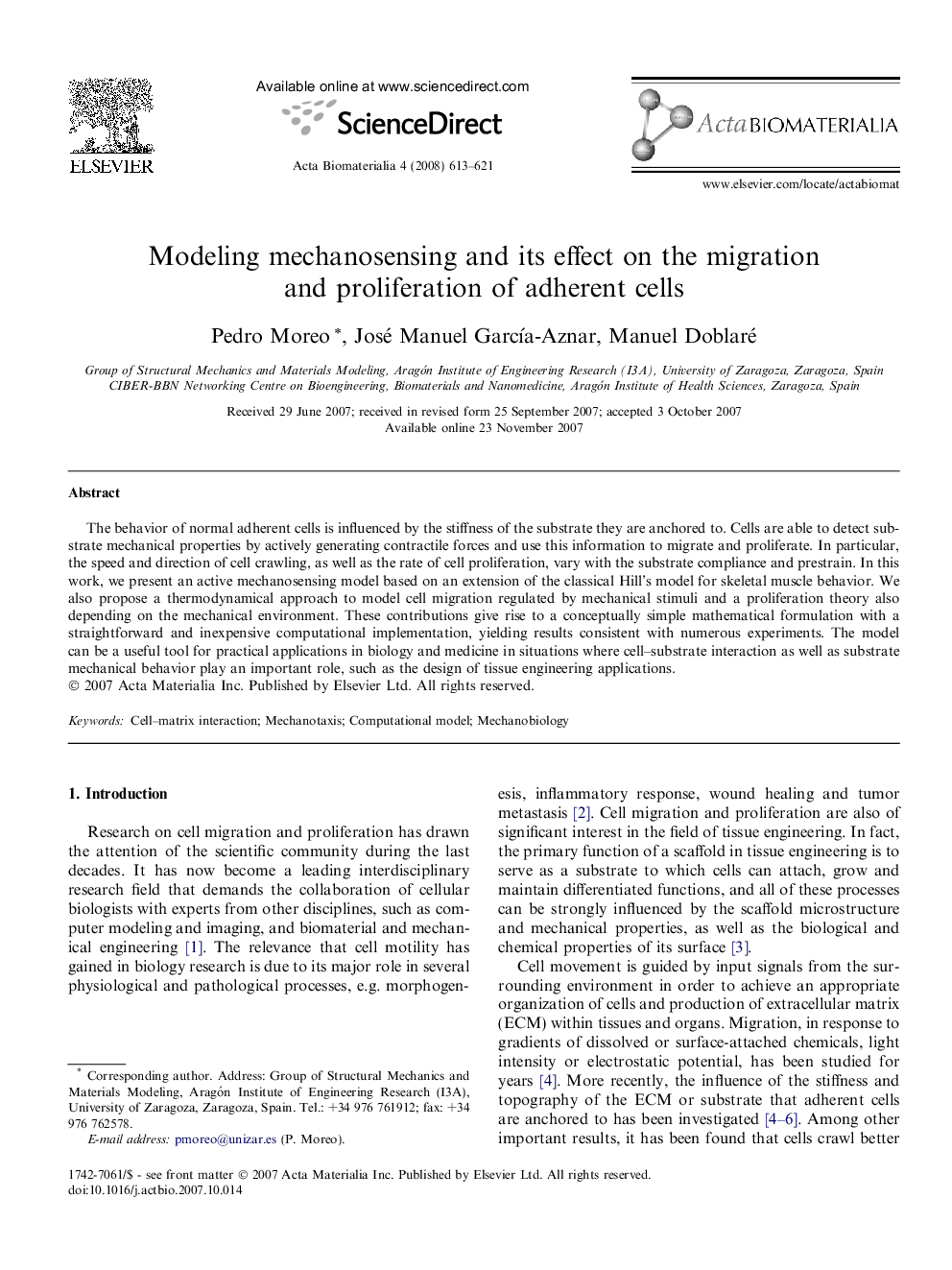| Article ID | Journal | Published Year | Pages | File Type |
|---|---|---|---|---|
| 2319 | Acta Biomaterialia | 2008 | 9 Pages |
The behavior of normal adherent cells is influenced by the stiffness of the substrate they are anchored to. Cells are able to detect substrate mechanical properties by actively generating contractile forces and use this information to migrate and proliferate. In particular, the speed and direction of cell crawling, as well as the rate of cell proliferation, vary with the substrate compliance and prestrain. In this work, we present an active mechanosensing model based on an extension of the classical Hill’s model for skeletal muscle behavior. We also propose a thermodynamical approach to model cell migration regulated by mechanical stimuli and a proliferation theory also depending on the mechanical environment. These contributions give rise to a conceptually simple mathematical formulation with a straightforward and inexpensive computational implementation, yielding results consistent with numerous experiments. The model can be a useful tool for practical applications in biology and medicine in situations where cell–substrate interaction as well as substrate mechanical behavior play an important role, such as the design of tissue engineering applications.
